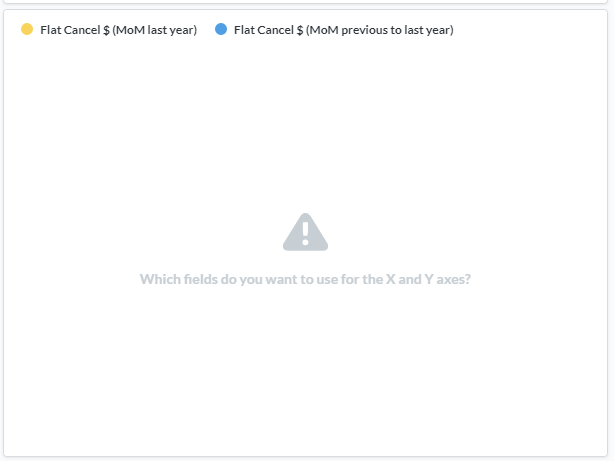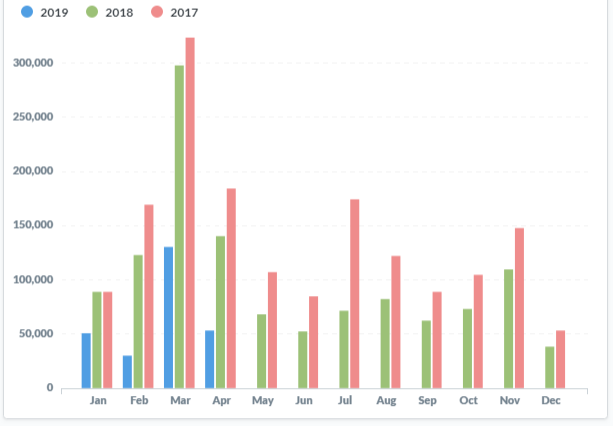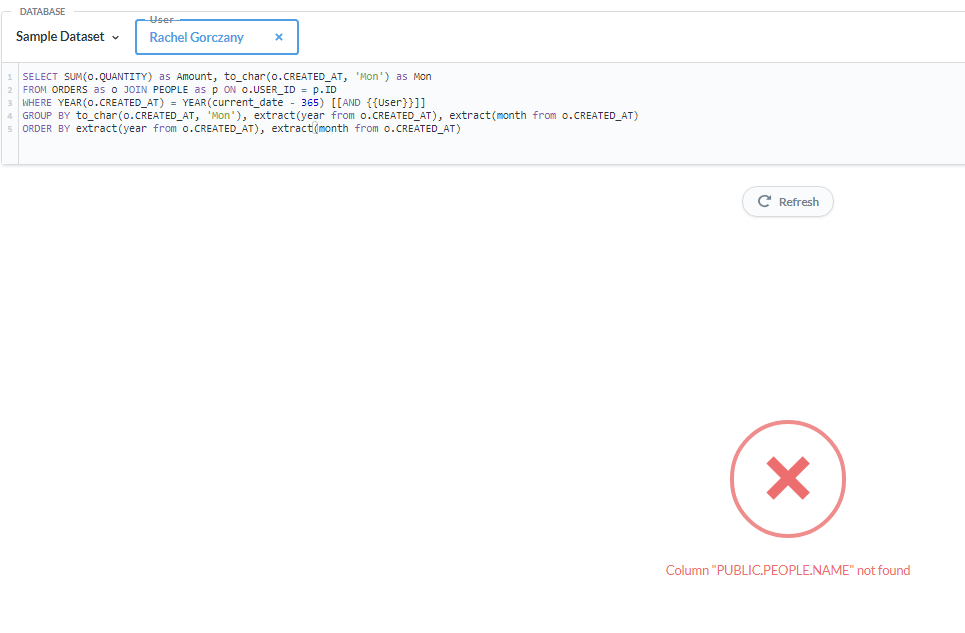@flamber
ok, so I tried to reproduce this without using filters, just adding a couple compatible questions to a dashboard and making sure the 1st one didnt return any value but it works if you do that.
That made me think this issue only happens if there is a relative filter being used.
Imagine you have a stores table and a products_sold table, you have a FK on products_sold to store and you have entries for multiple products sold in multiple stores.
Data Sample:
table stores
id name
1 Store 1
2 Store 2
table products_sold
id name store_id sold_at
1 table 1 2019-04-18
2 chair 2 2019-04-17
3 desk 2 2019-04-18
And you have 2 queries, both showing Count(products_sold.id), sold_at, one for yesterday and one for today. You add both to a dashboard, on the same graphic, but you start with the yesterday one since you want to show dates in the right order.
You add a relative filter to both queries and the dashboard to filter by stores.name.
If no filter is applied, the graph will show ok since you have data for both queries so you will see 2 bars (remember I tried this with bar graphs) one for yesterday (Count = 1) and one for today (Count = 2).
If you apply the filter ‘Store 2’ then it will still work but it will show yesterday (Count = 1) and today (Count = 1) this time.
Now, if you apply the filter ‘Store 1’ you will get this issue because the 1st query you added (yesterday) has nothing to show for Store 1, so it comes back empty, and even if the 2nd query has a value to show it wont show up and your graph will end up looking like the 1st pic I posted.
That’s pretty much it, if you look at the second pic I posted you can see everything displaying right, but I applied a filter where there is no results for 2019 but there is for 2018 and 2017, and yet it ended like that. It makes me wonder if this is because it will keep the display settings for the bar graph from the 1st query you added on the graph. so if that one is empty it wont know how to display the other ones since it wont get the config from those.
Also notice that 2019 query is not showing on the 1st pick on the header, only 2018 and 2017 are (they show the question real name).
Hopefully this gives you a better idea if the issue I’m having.





